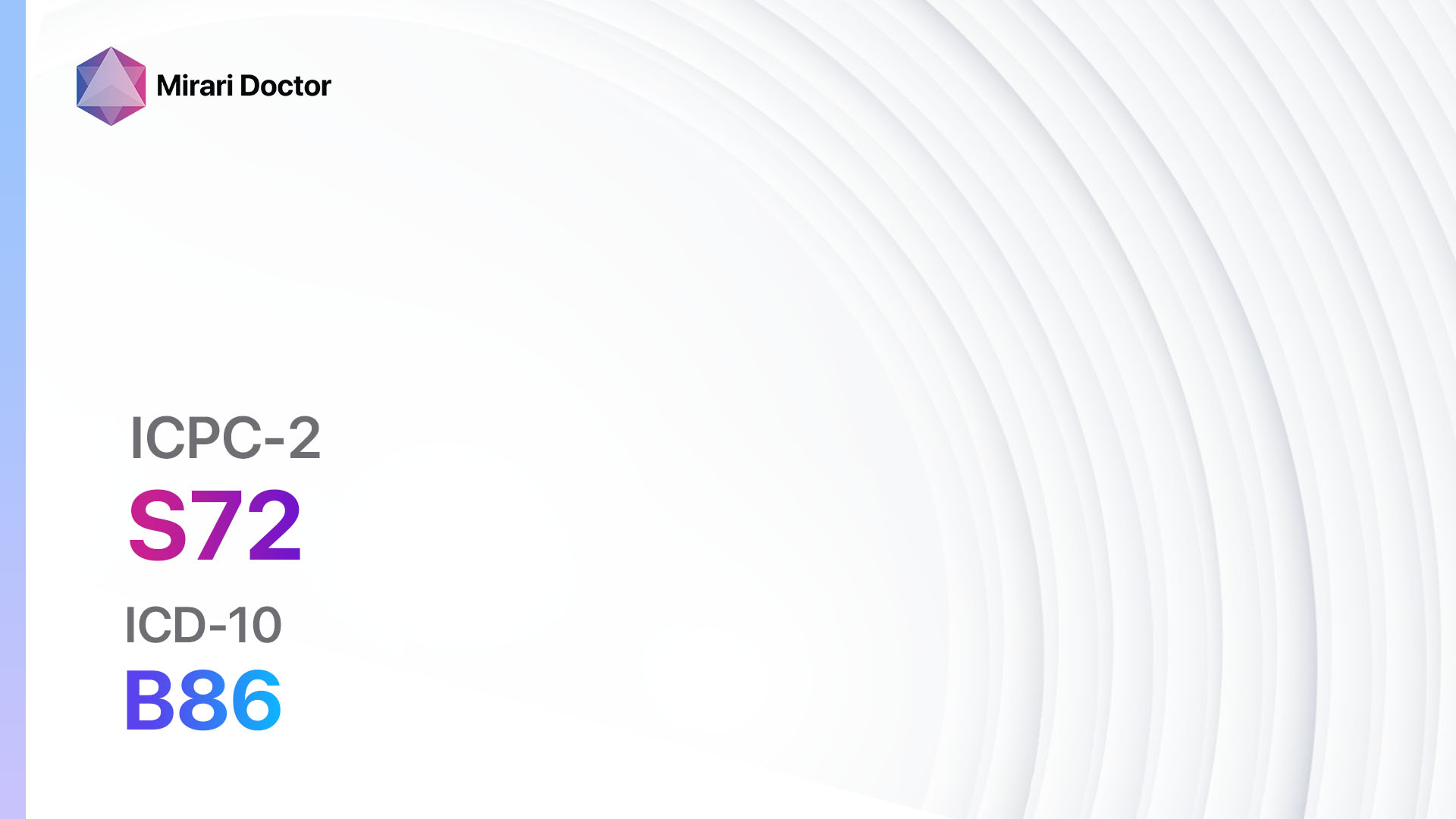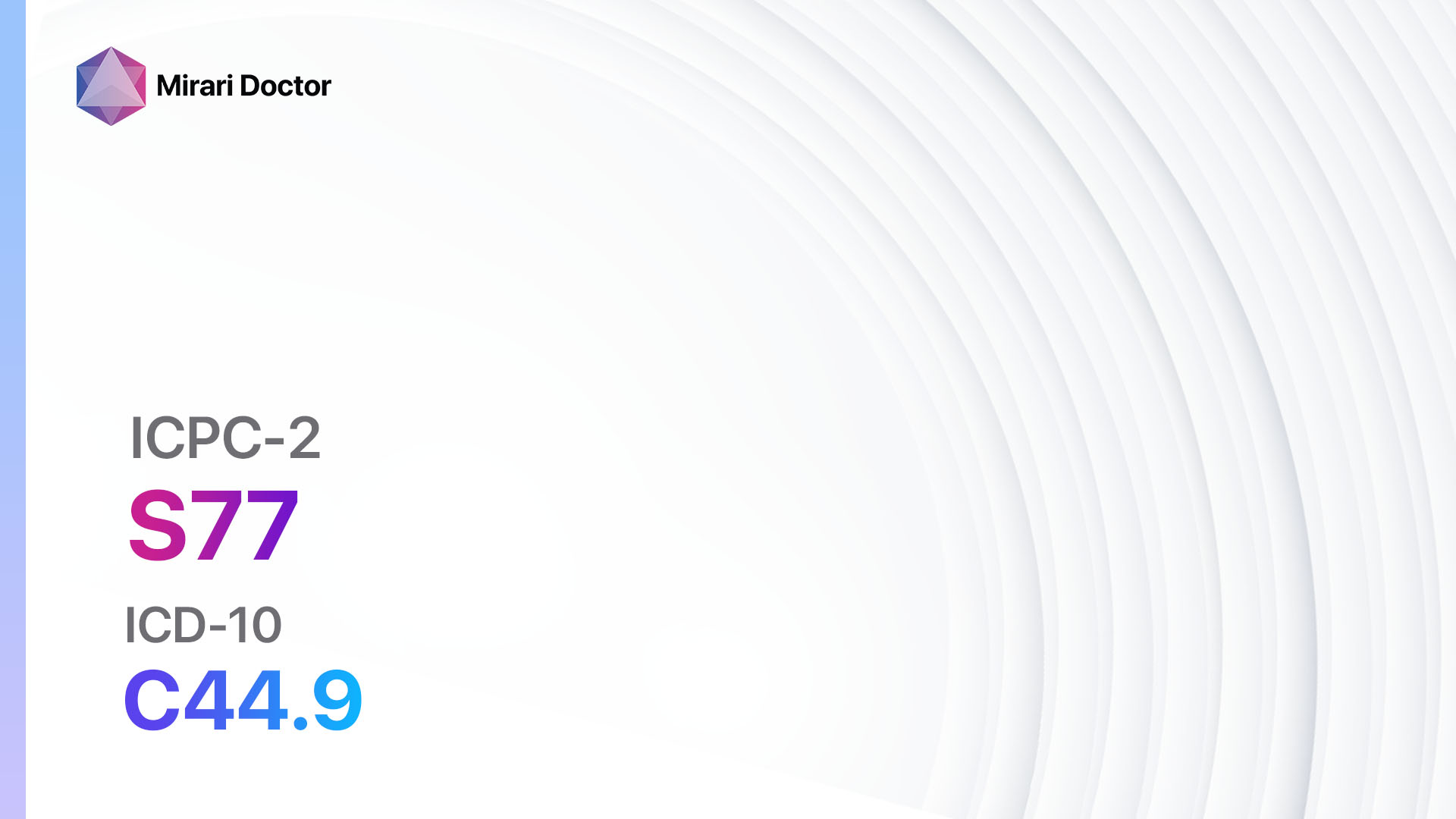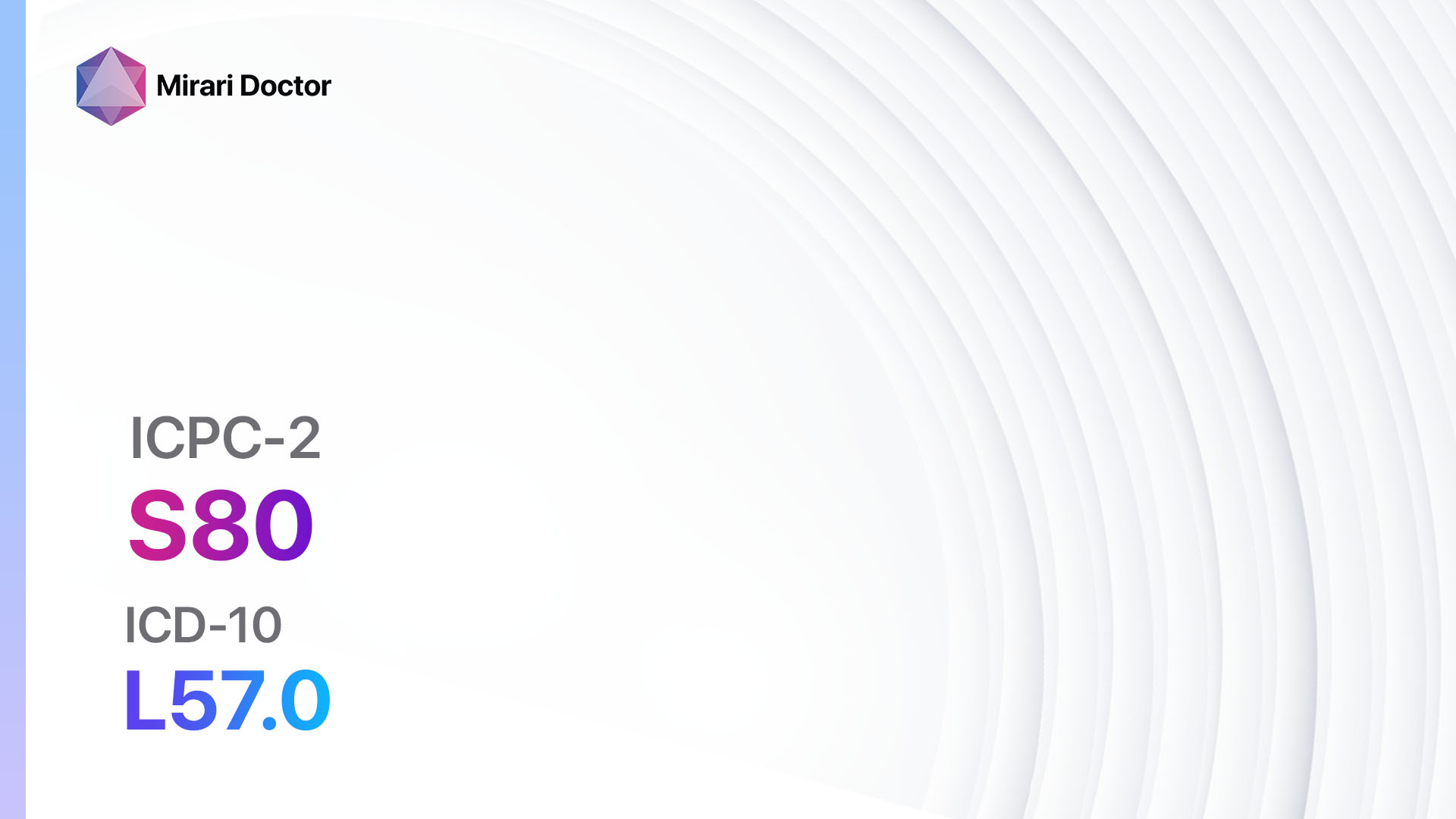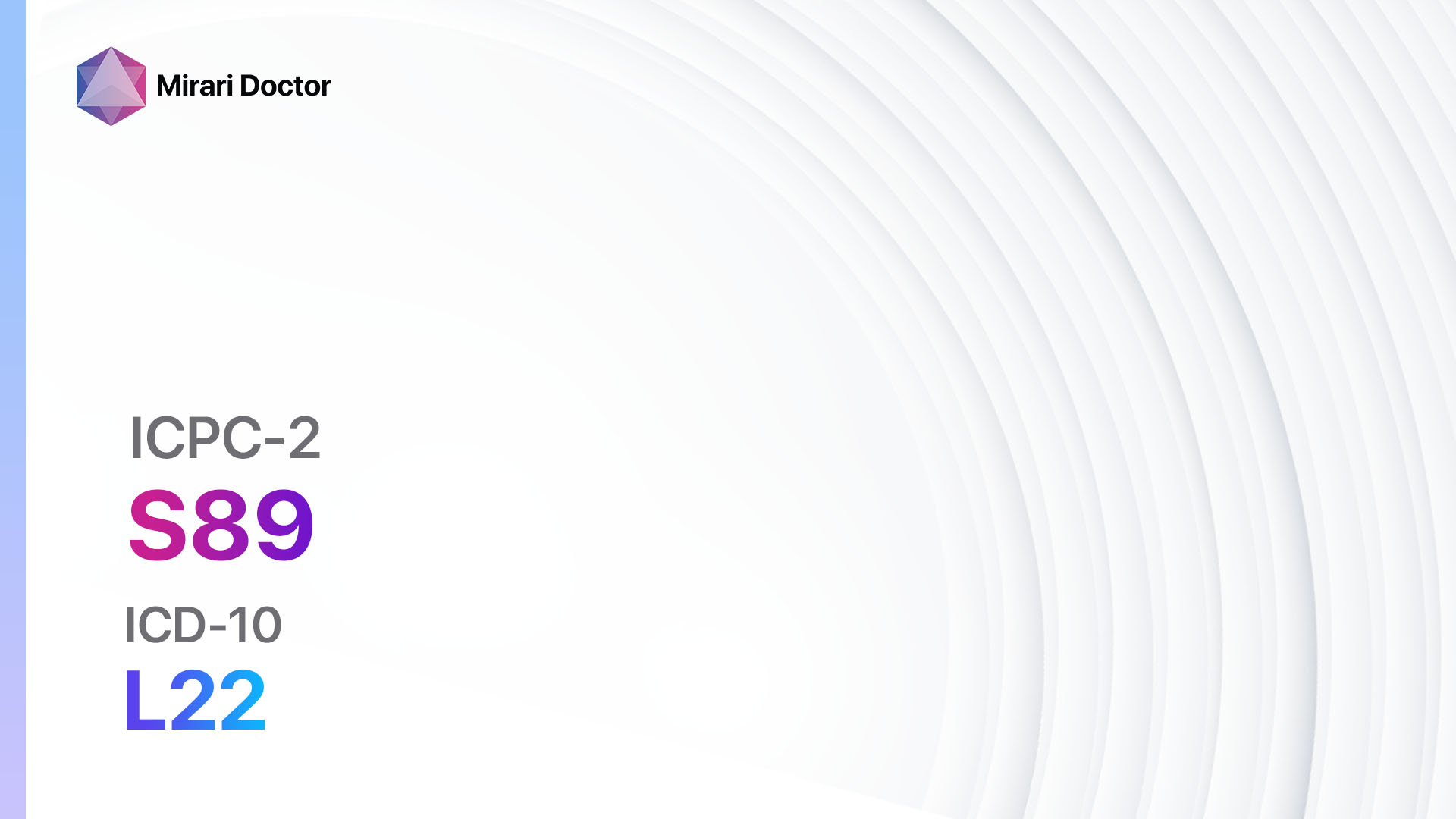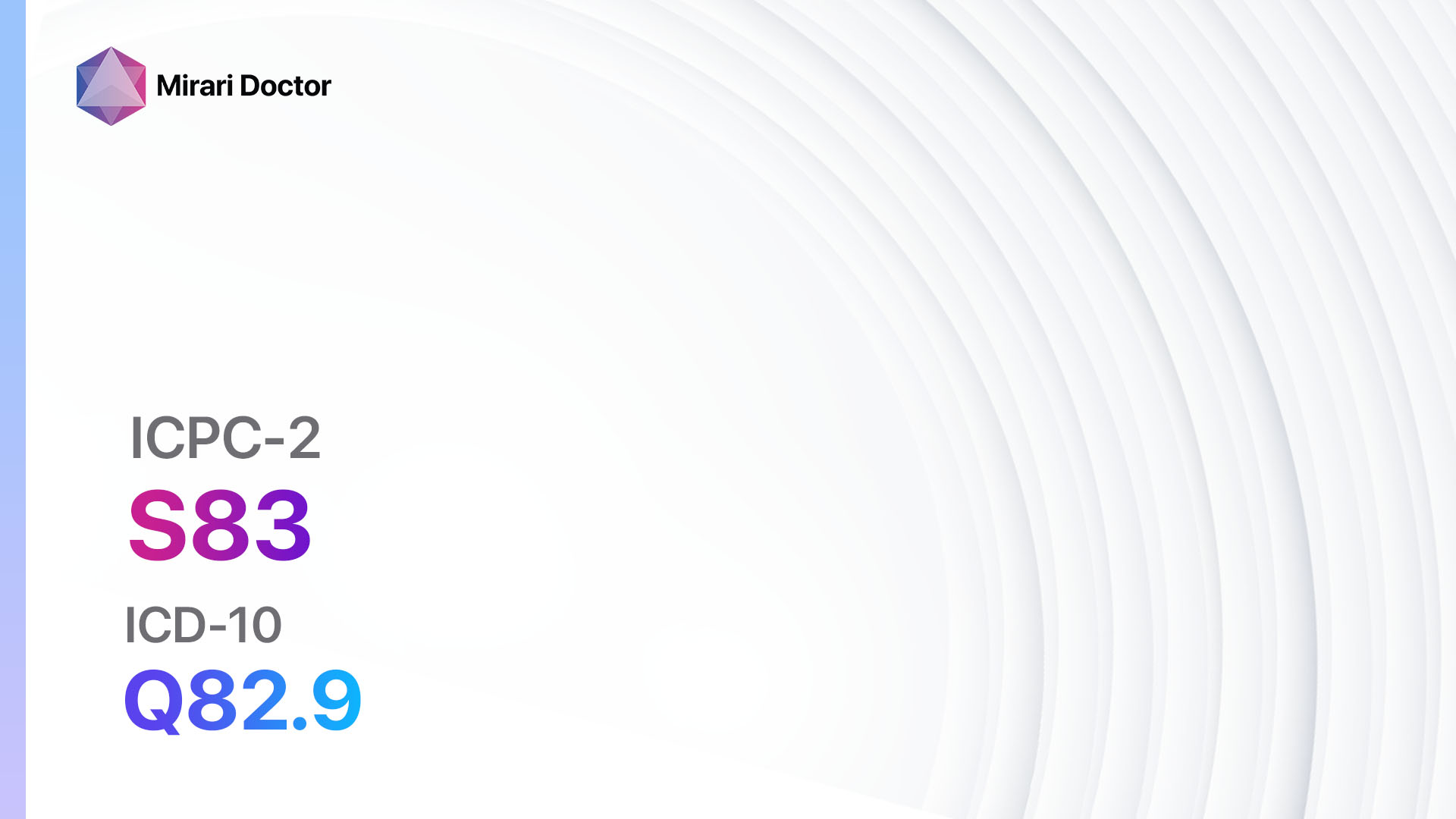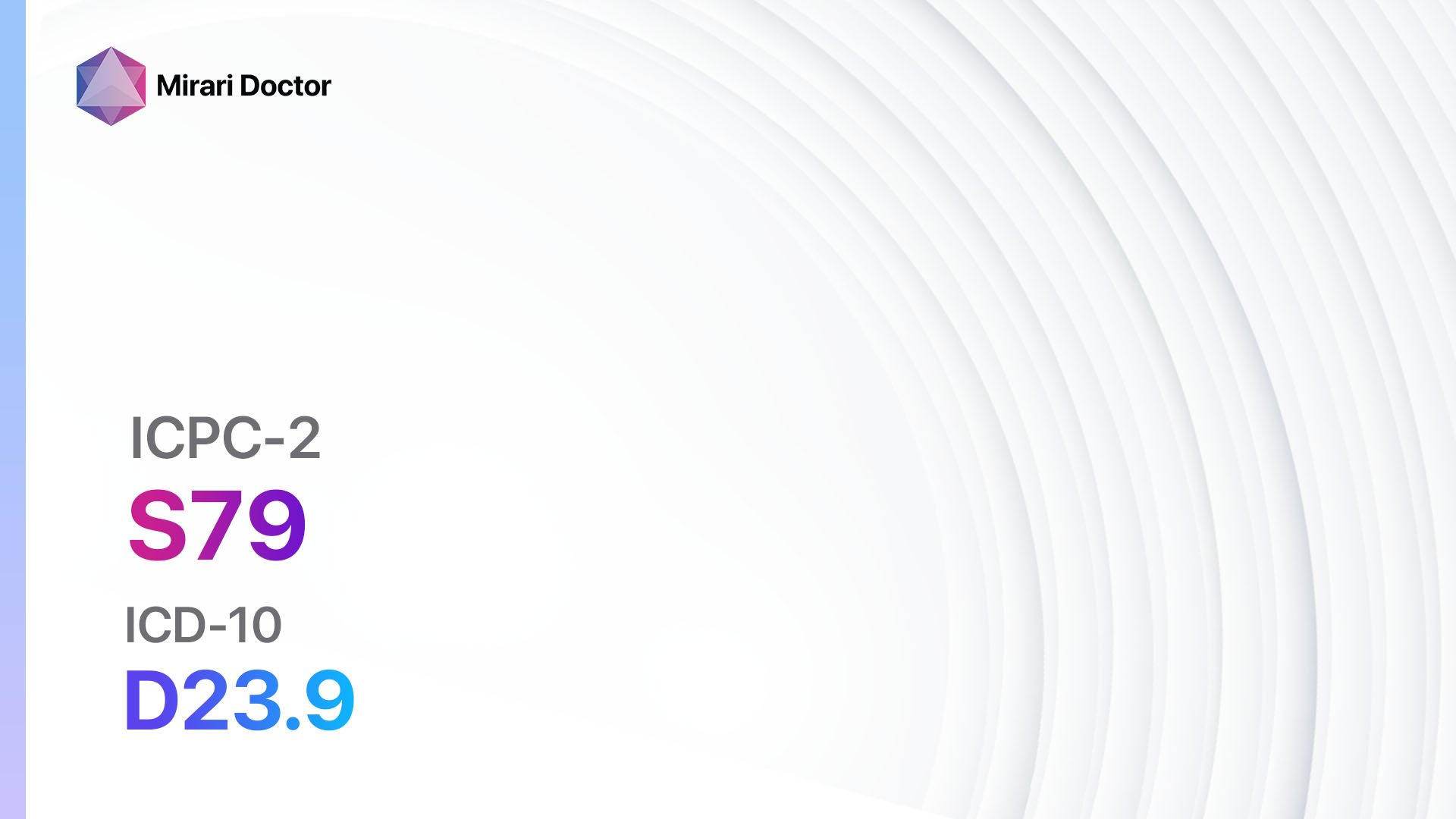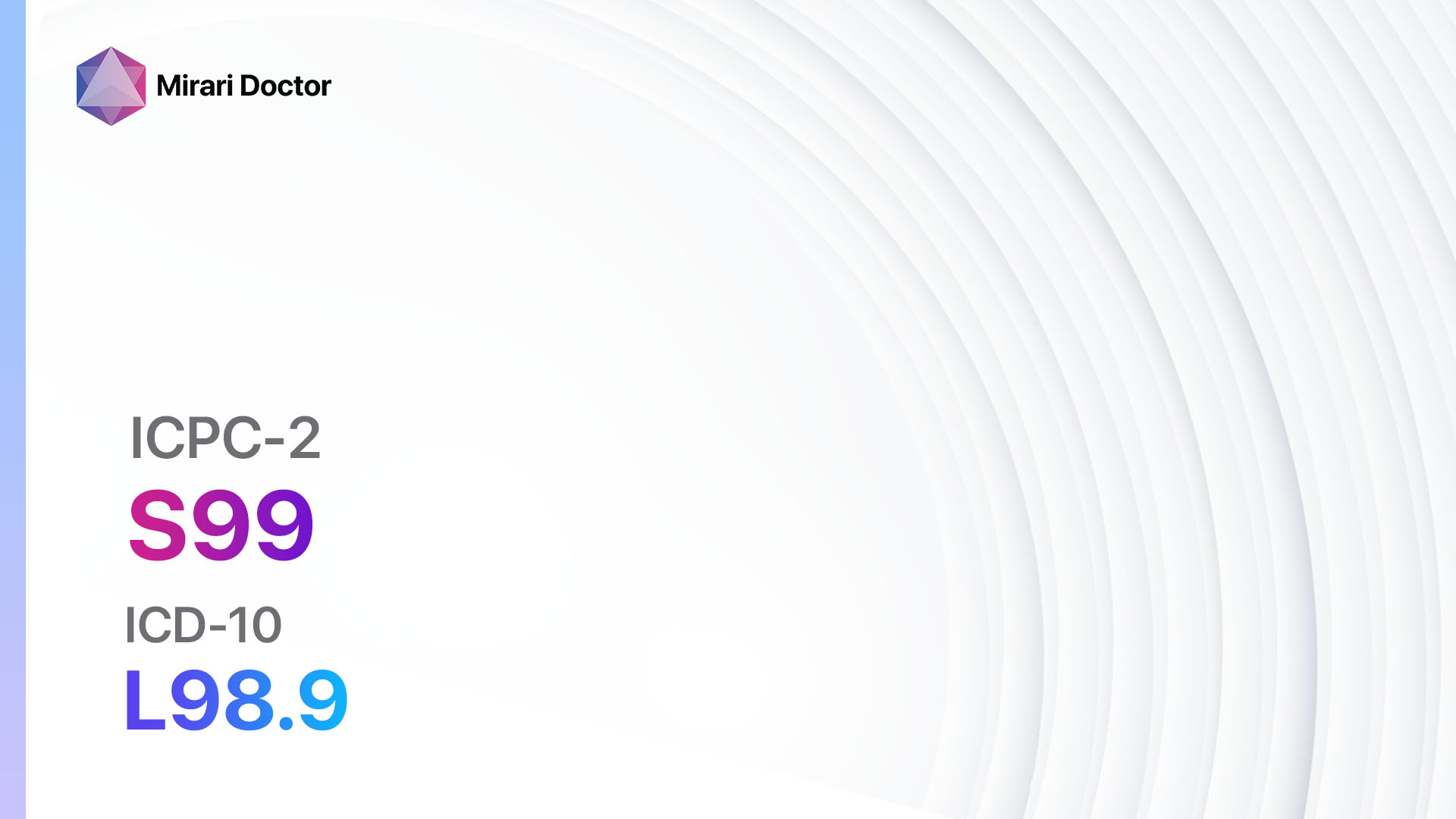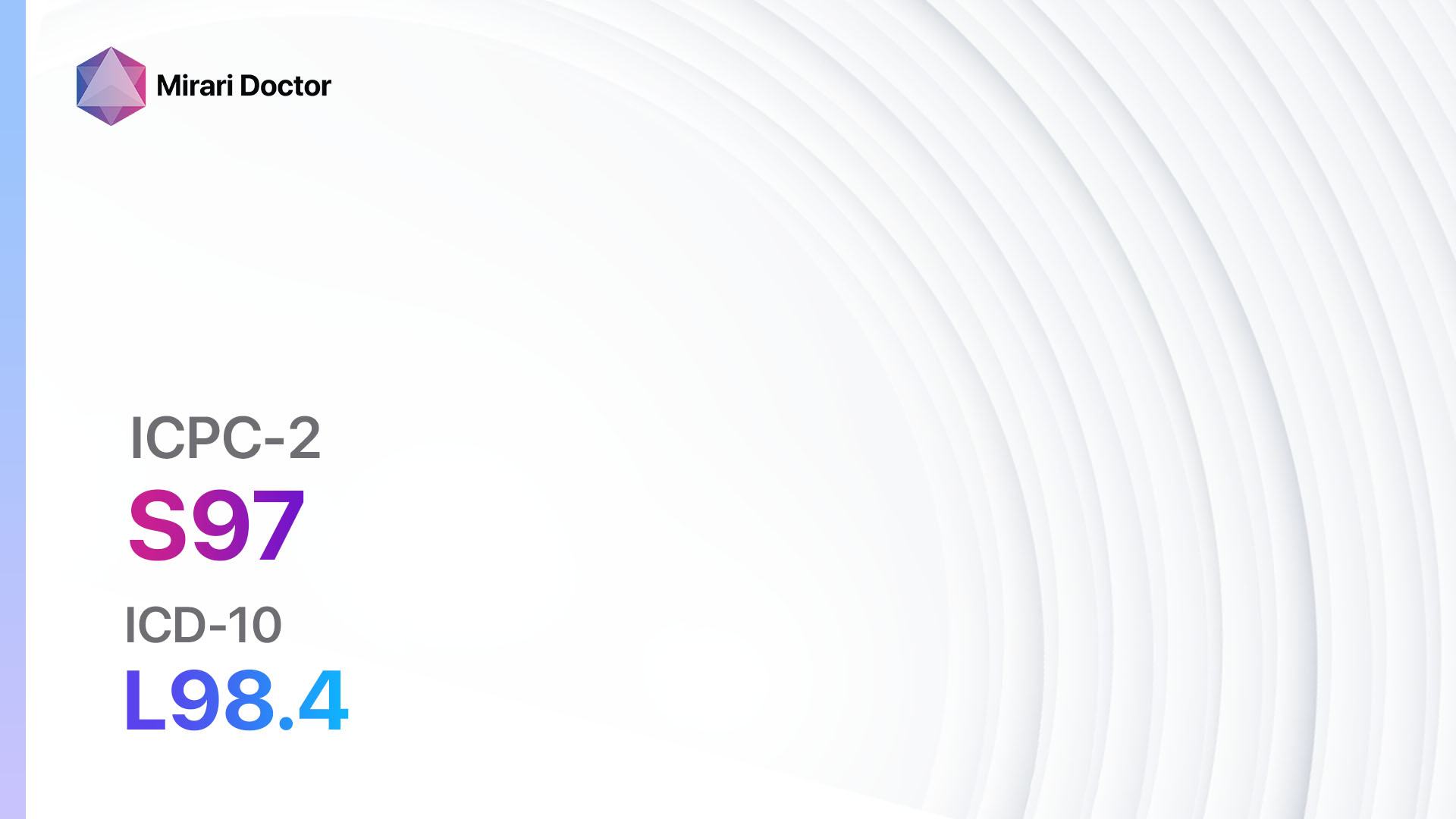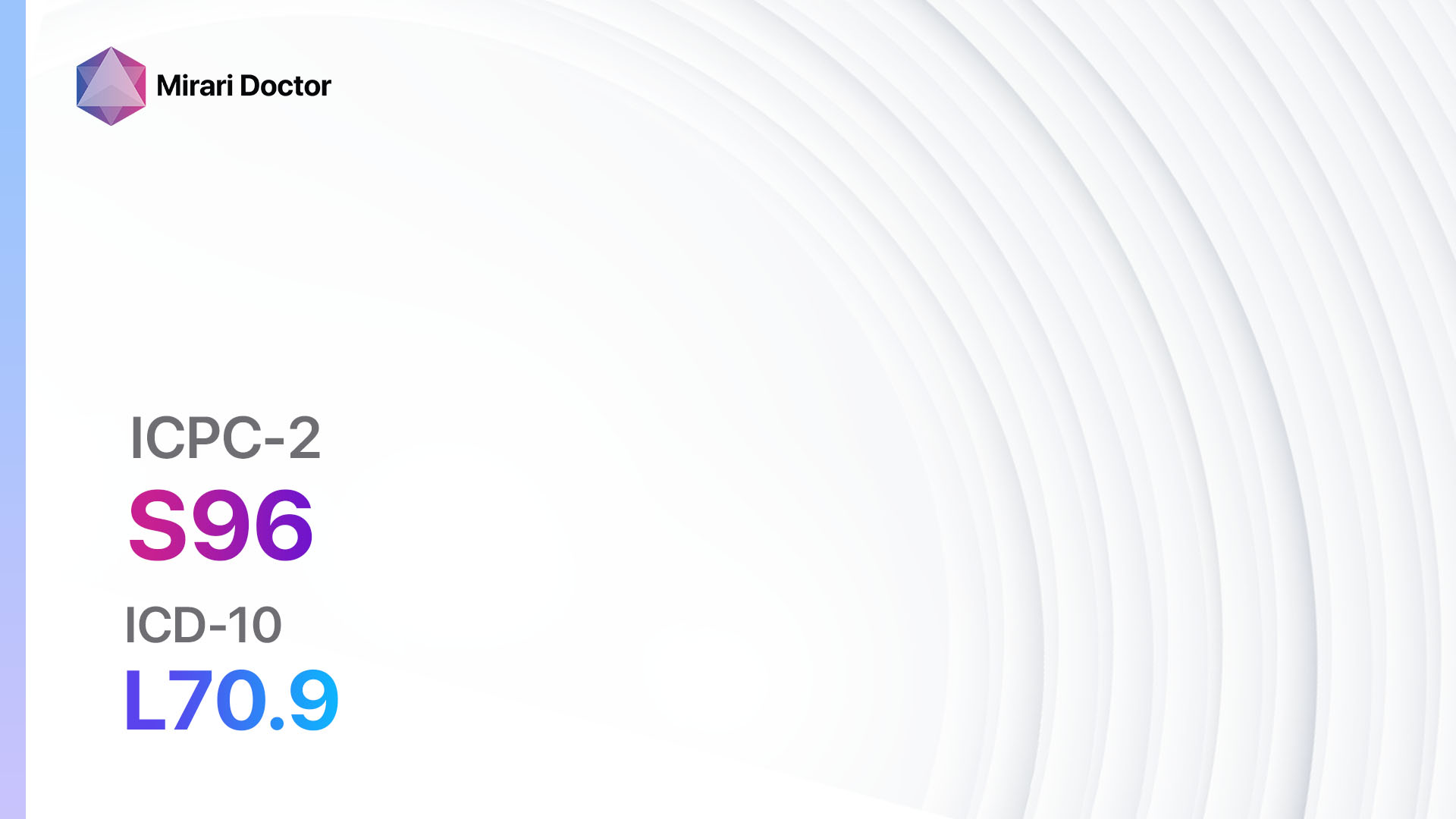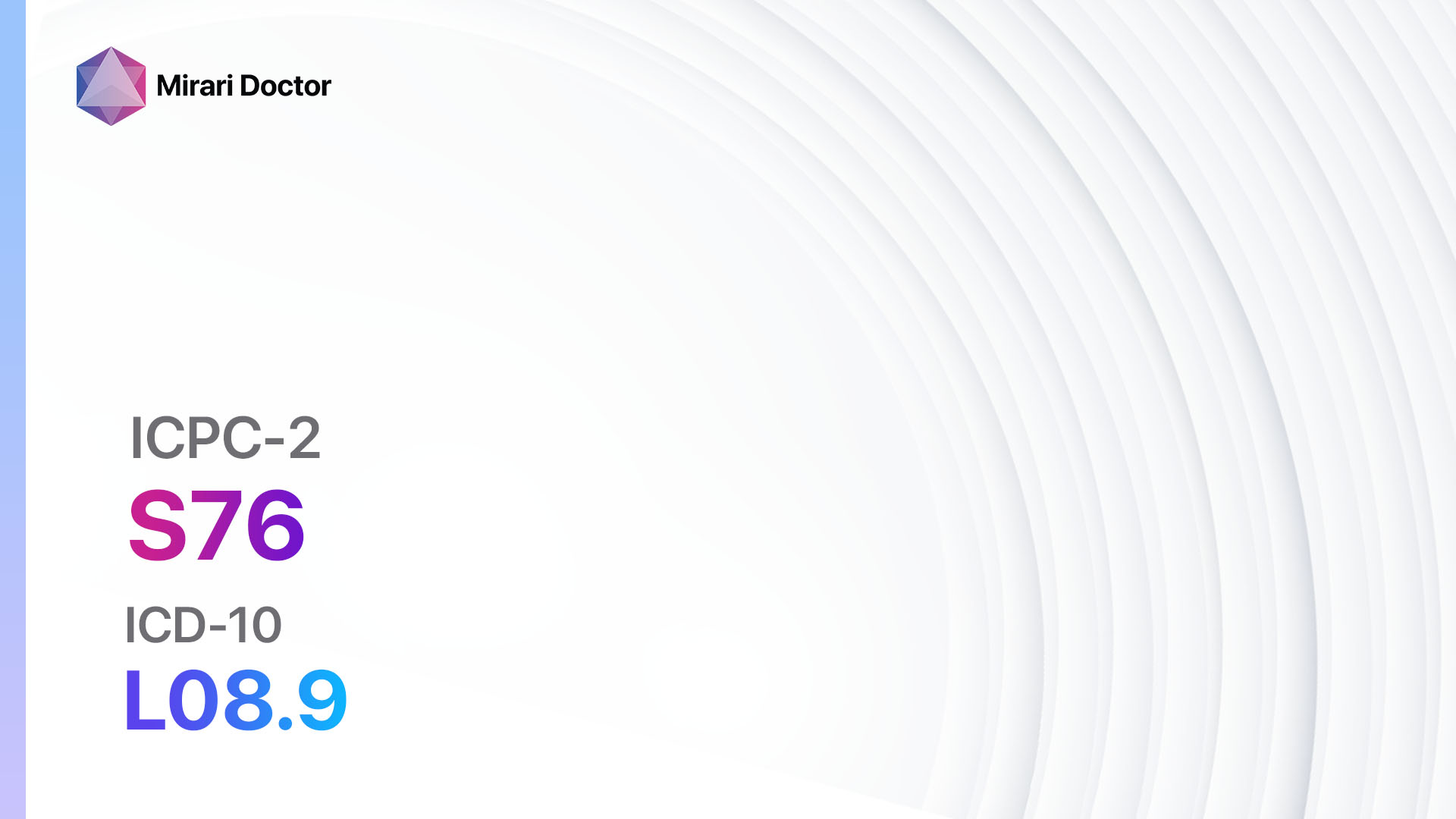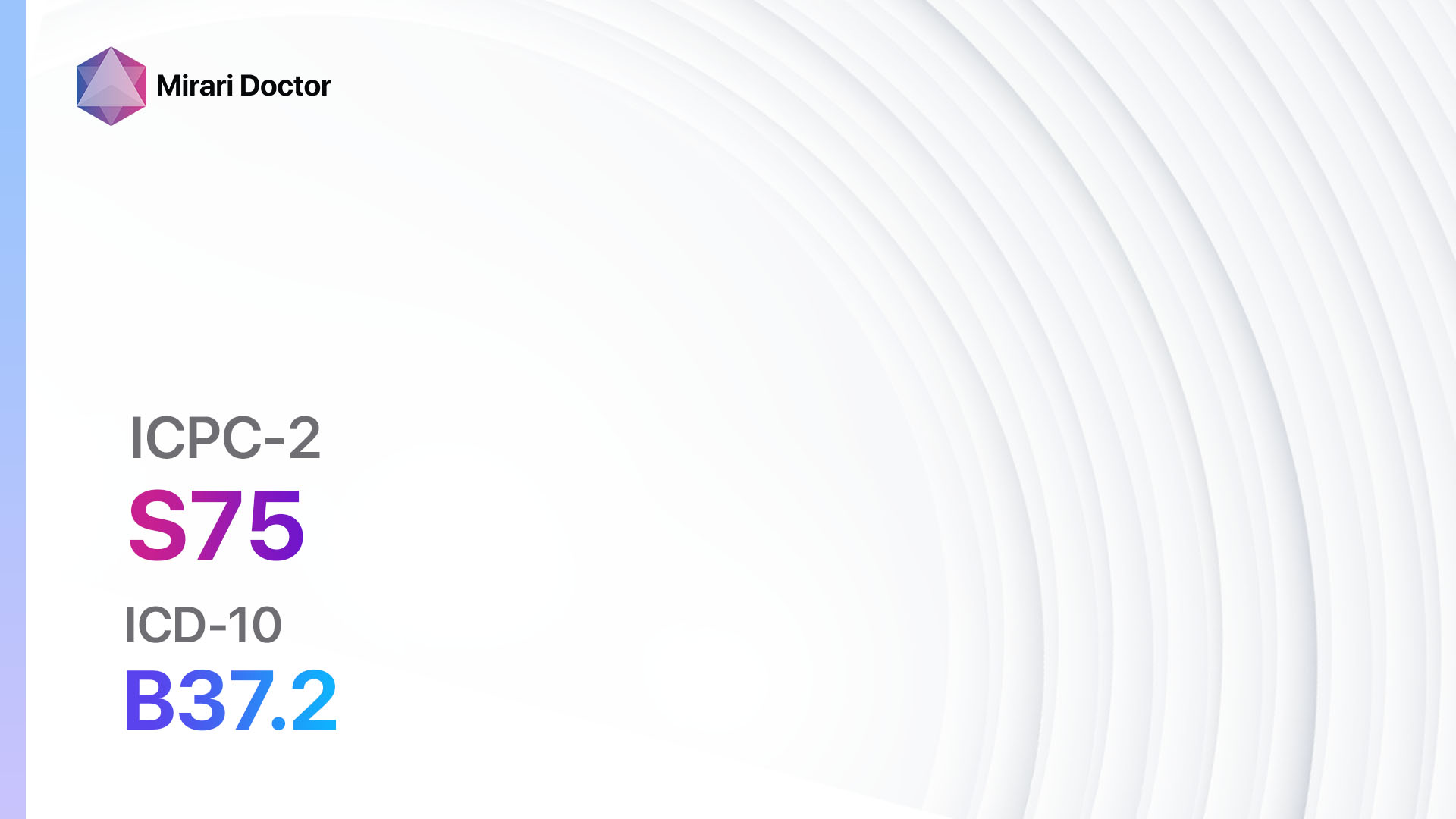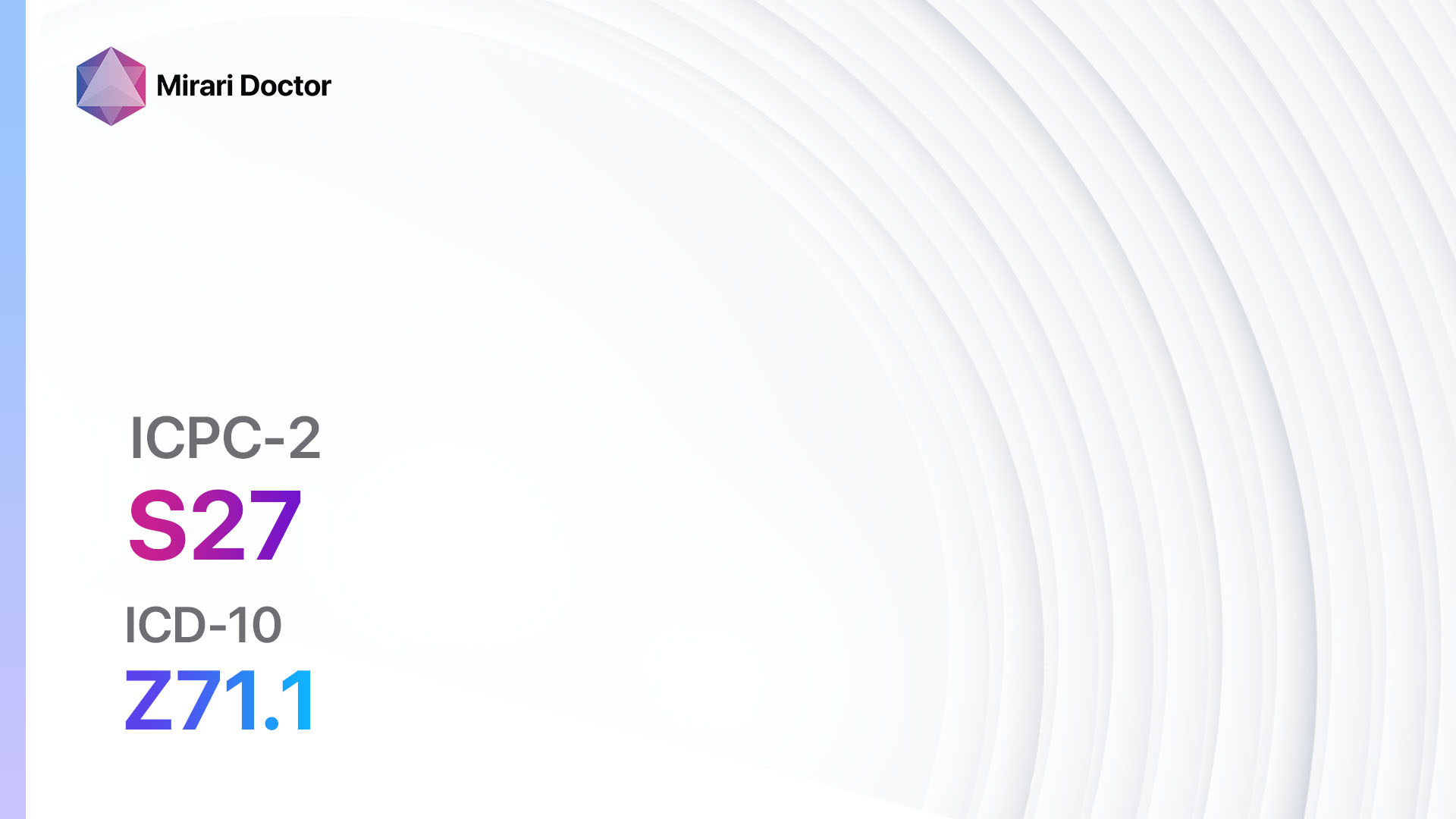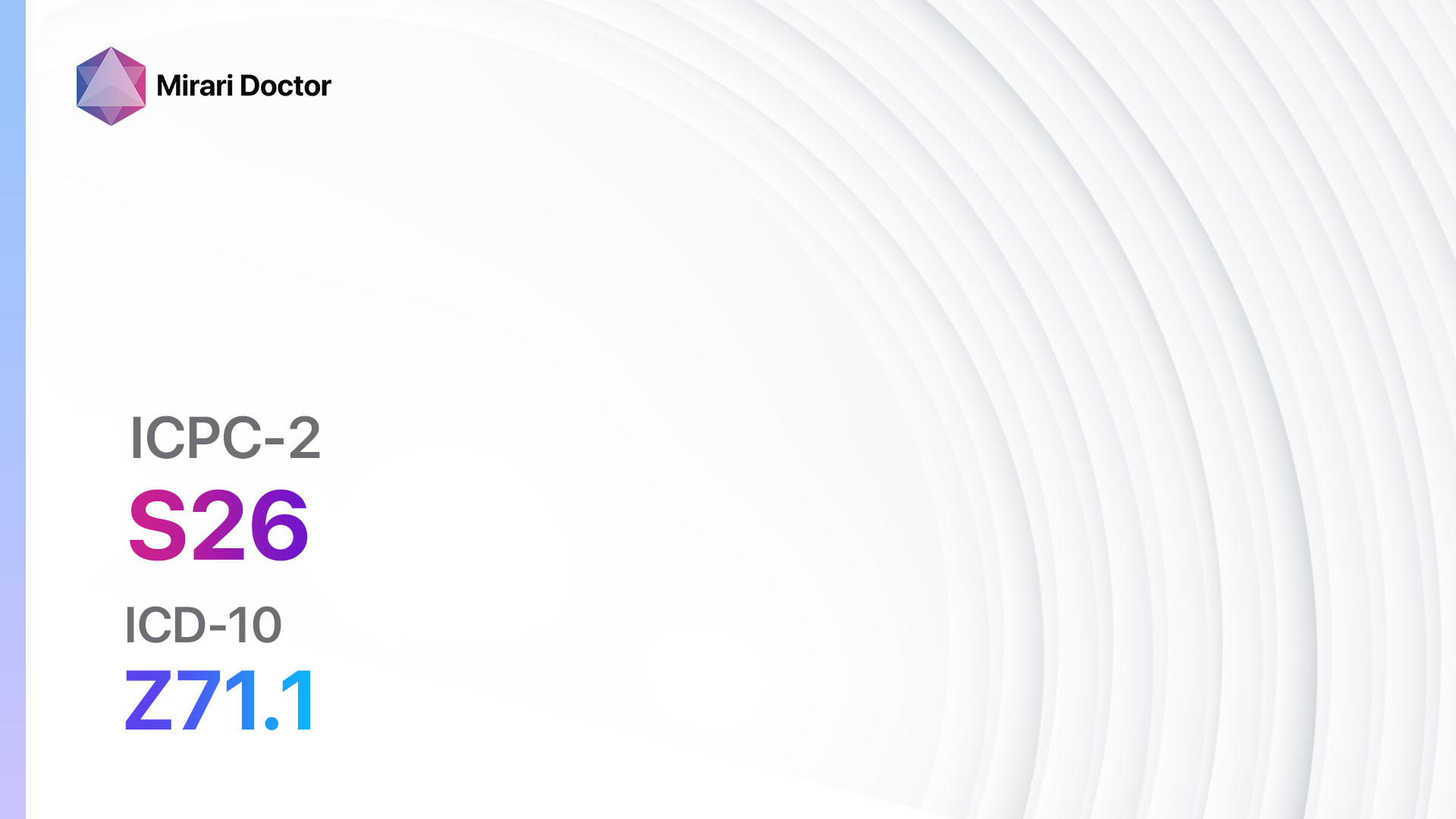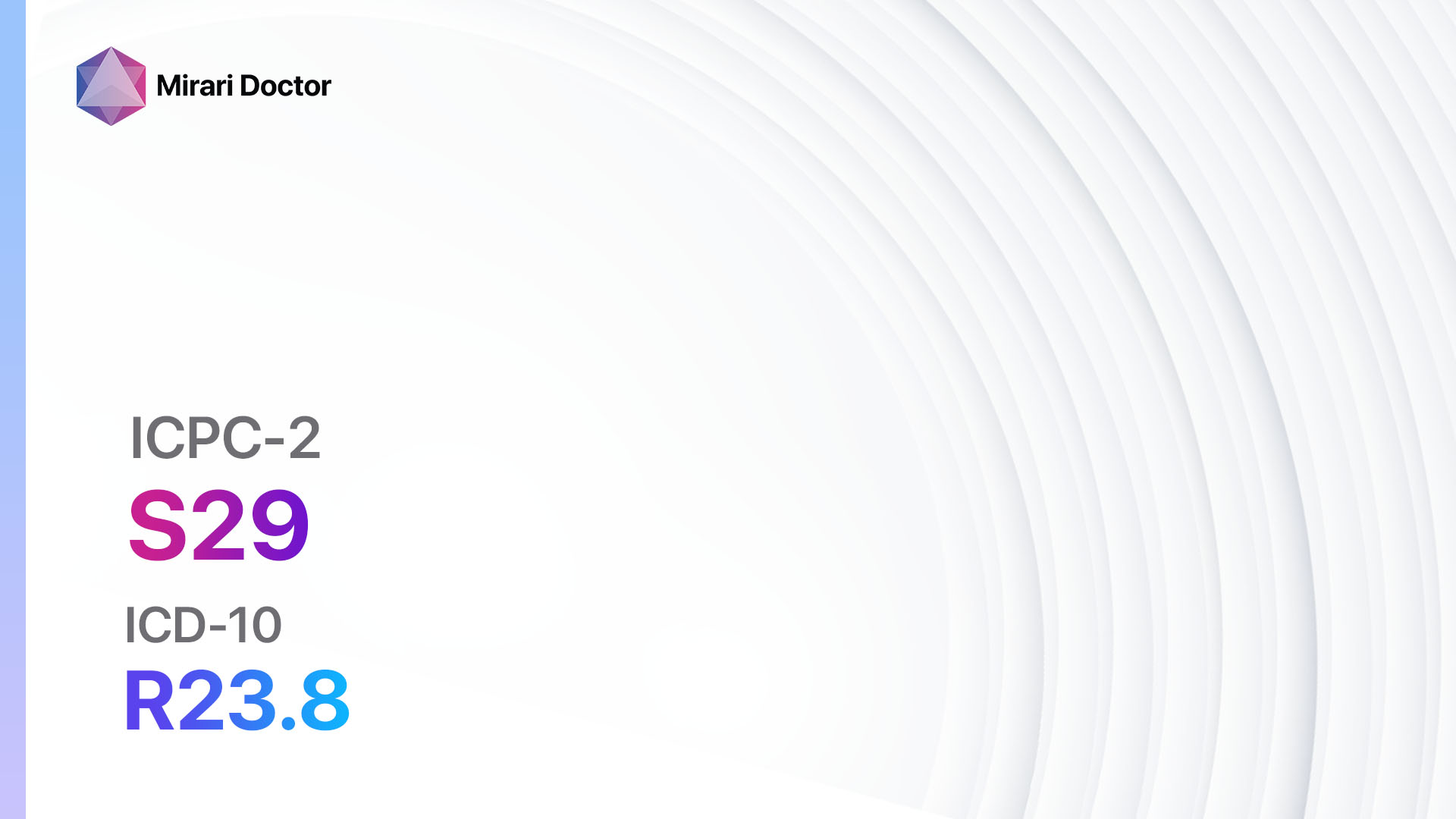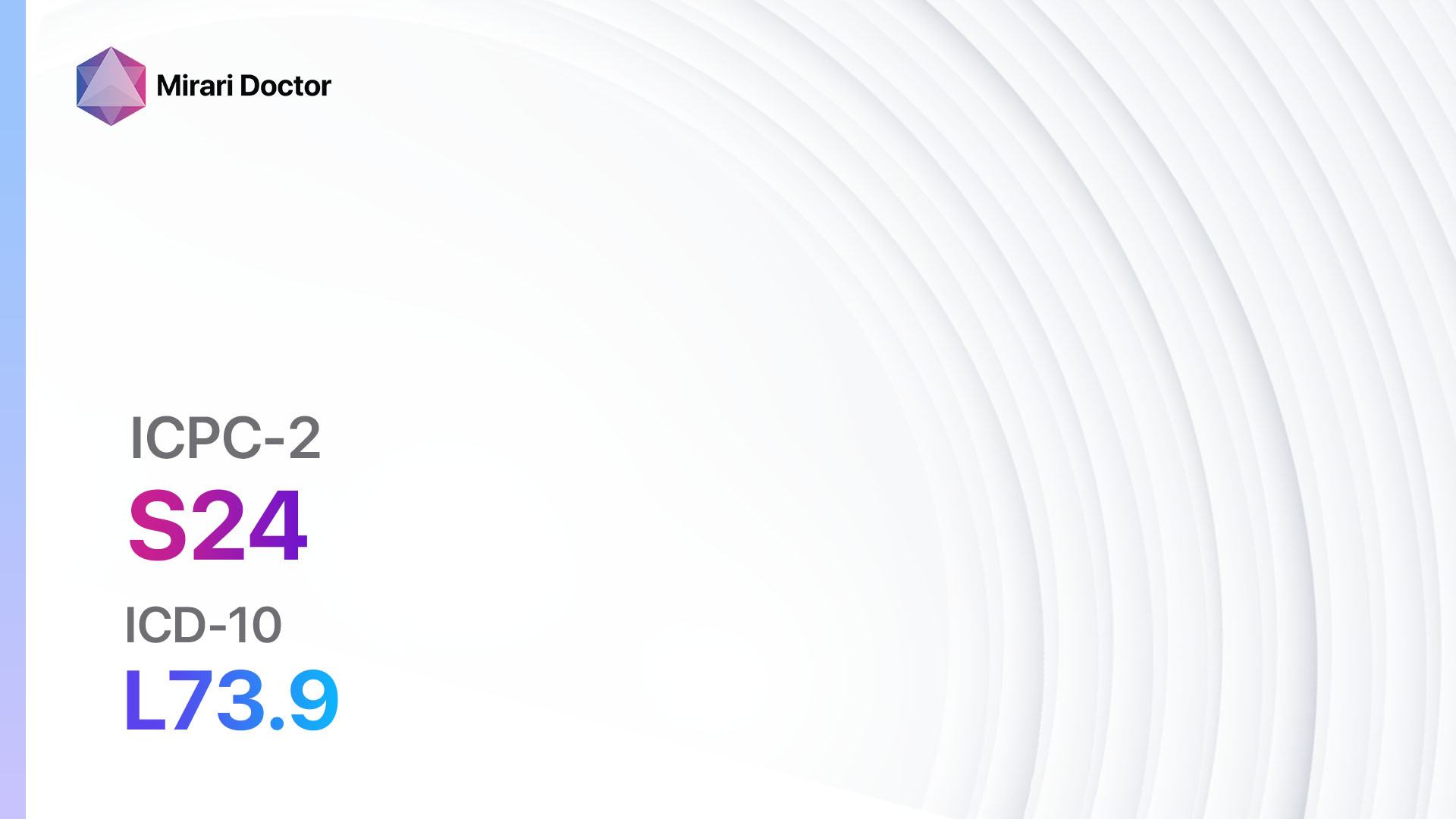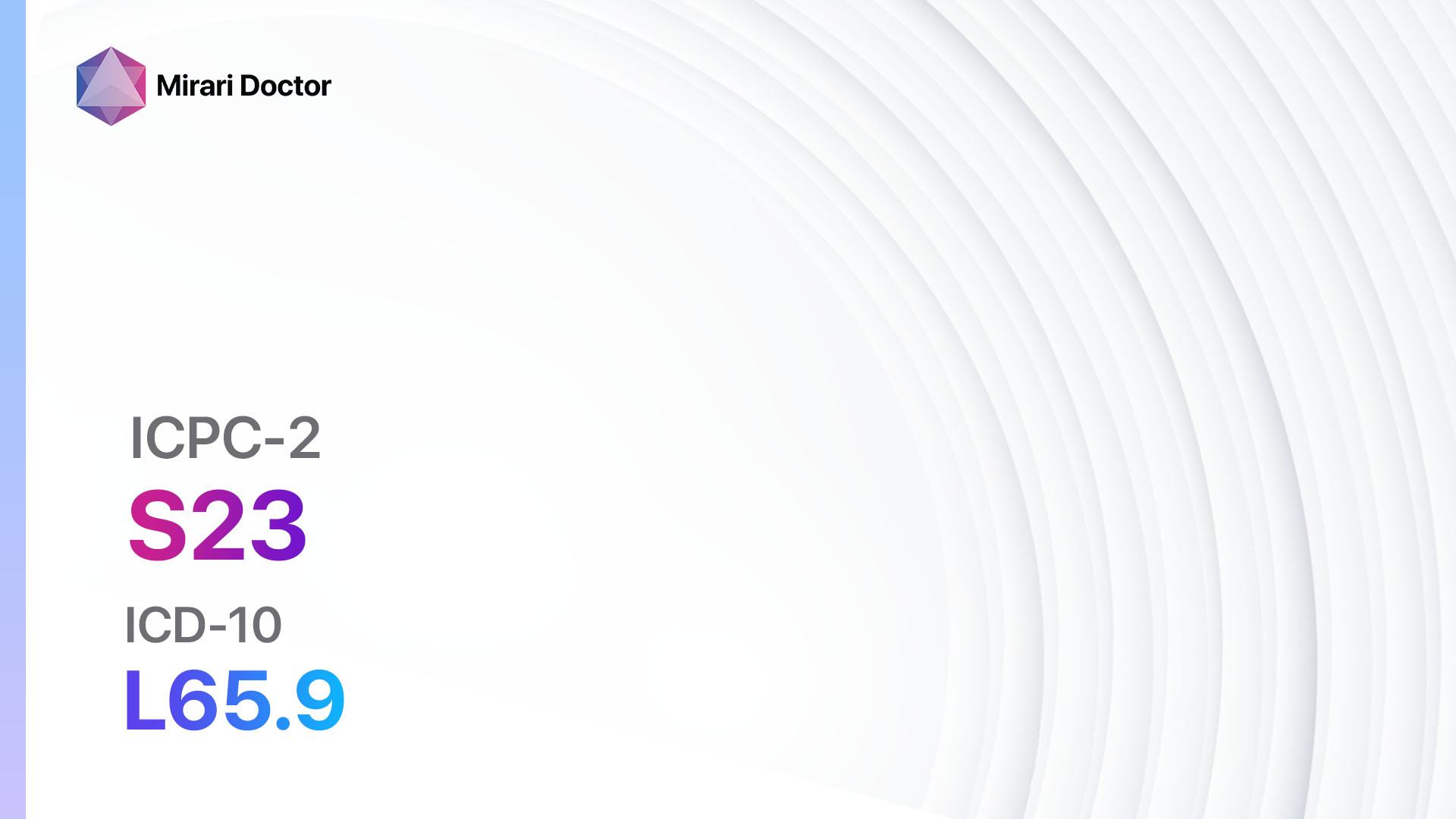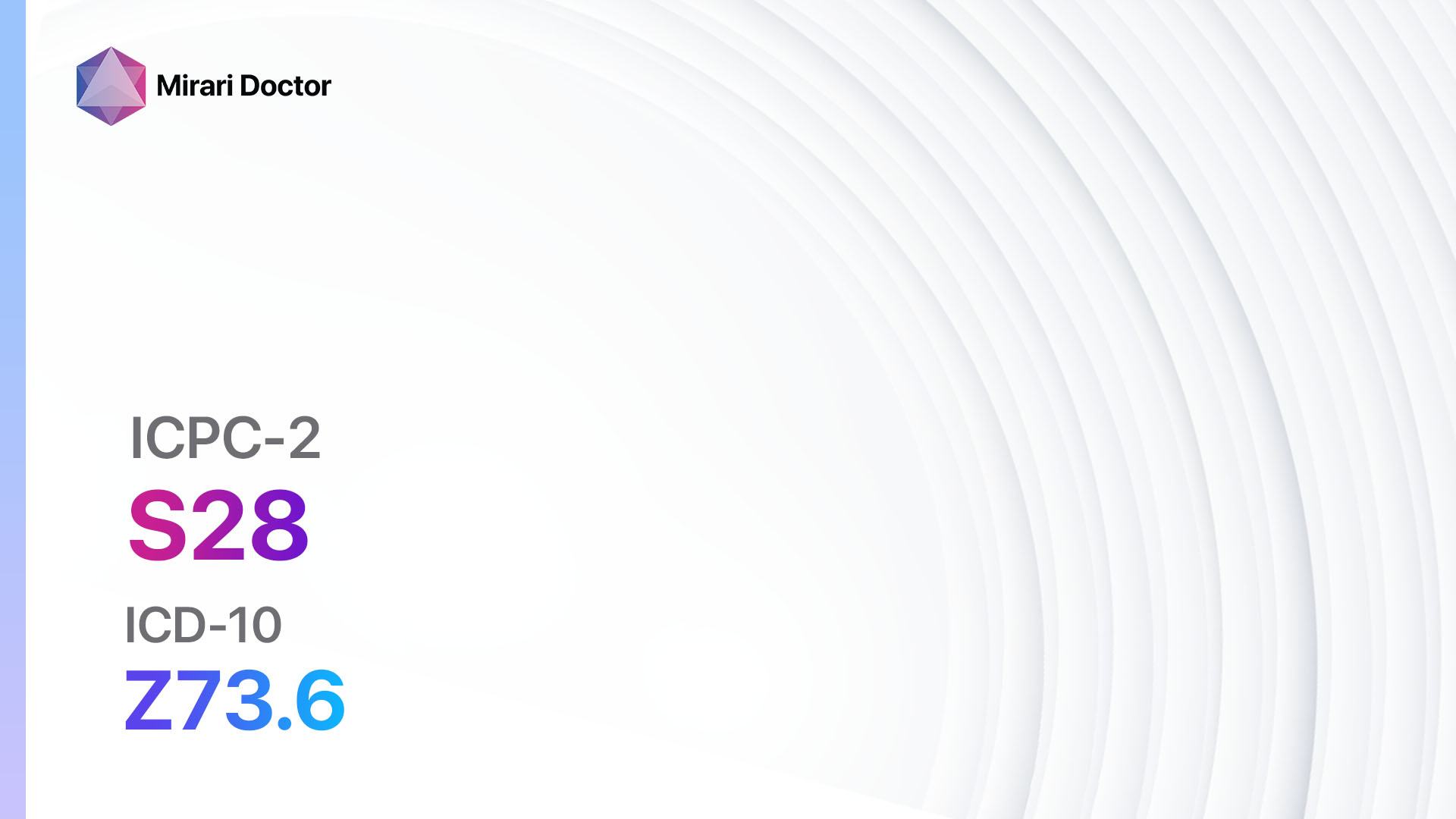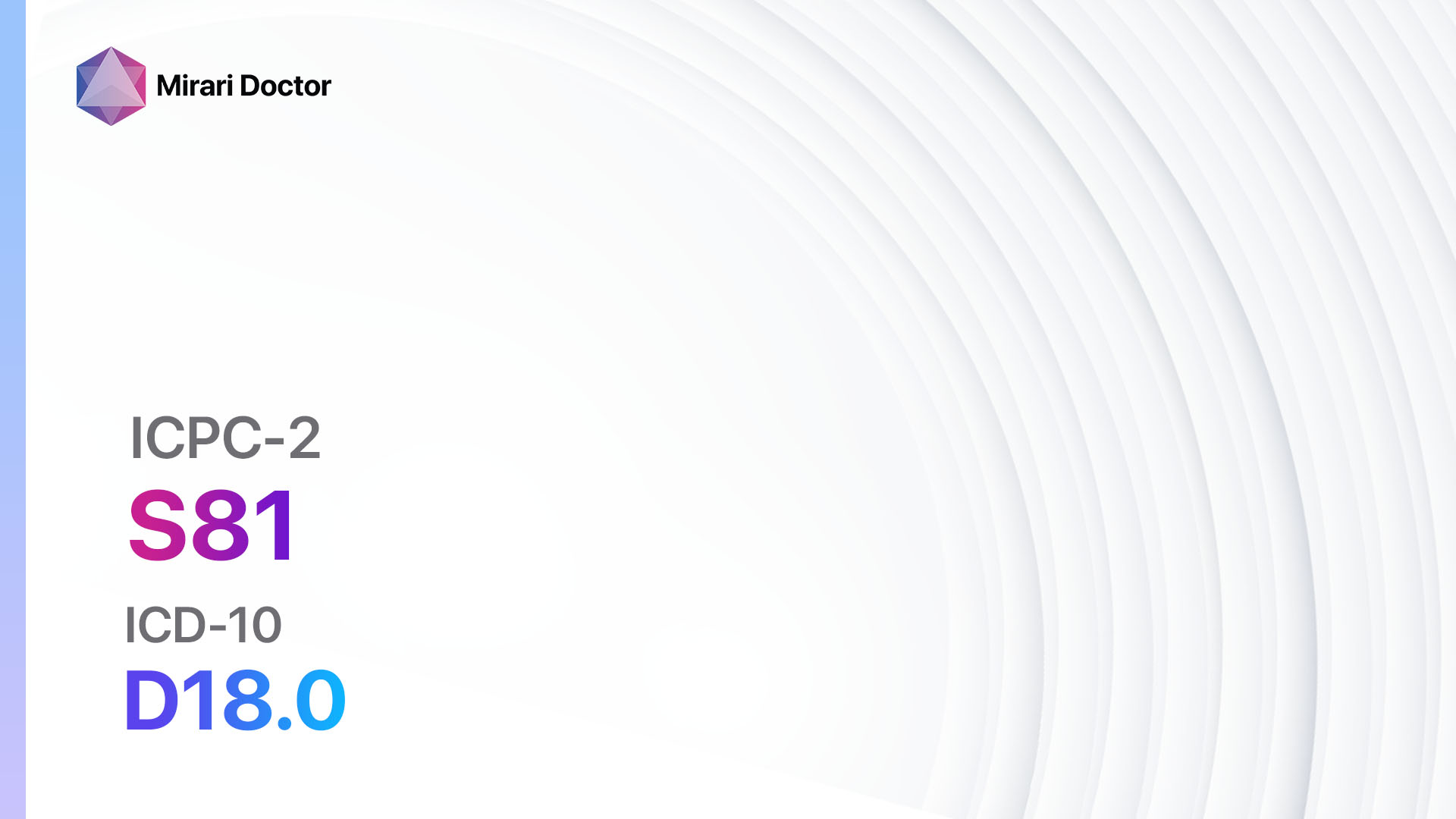
Introduction
Haemangioma/lymphangioma is a condition characterized by the abnormal growth of blood vessels (haemangioma) or lymphatic vessels (lymphangioma). These growths can occur anywhere in the body and can vary in size and severity[1]. The aim of this guide is to provide a comprehensive overview of the symptoms, causes, diagnostic steps, possible interventions, and lifestyle interventions for haemangioma/lymphangioma.
Codes
Symptoms
- Rapid growth of a lump or mass
- Red or bluish discoloration of the skin
- Swelling or enlargement of the affected area
- Pain or discomfort, especially if the growth is pressing on nearby structures
- Ulceration or bleeding in severe cases[4]
Causes
- Genetic factors
- Hormonal changes during pregnancy
- Trauma or injury to the affected area
- Abnormal development of blood vessels or lymphatic vessels[5]
Diagnostic Steps
Medical History
- Gather information about the patient’s symptoms, including the duration and progression of the growth.
- Ask about any previous trauma or injury to the affected area.
- Inquire about any family history of similar growths or vascular disorders.
- Assess the patient’s overall health and any underlying medical conditions that may contribute to the development of haemangioma/lymphangioma[6].
Physical Examination
- Perform a thorough physical examination of the affected area, noting the size, color, and texture of the growth.
- Assess the surrounding tissues for any signs of compression or displacement.
- Palpate the growth to determine its consistency and tenderness.
- Check for any associated symptoms, such as pain or bleeding[7]..
Determine Severity
- Classify the haemangioma/lymphangioma based on severity and depth, if applicable:
- Superficial haemangioma/lymphangioma: Involves only the top layers of the skin.
- Deep haemangioma/lymphangioma: Extends into the deeper layers of the skin or underlying tissues.
- Combined haemangioma/lymphangioma: Involves both blood vessels and lymphatic vessels[8].
Laboratory Tests
- Blood tests: May be performed to assess the overall health of the patient and rule out any underlying medical conditions.
- Genetic testing: In some cases, genetic testing may be recommended to identify any specific genetic mutations associated with haemangioma/lymphangioma[9].
Diagnostic Imaging
- Ultrasound: Can be used to visualize the growth and assess its size, location, and characteristics.
- MRI (Magnetic Resonance Imaging): Provides detailed images of the growth and surrounding tissues, helping to determine the extent of the condition.
- CT scan (Computed Tomography): May be used to evaluate the growth and its relationship to nearby structures[10].
Other Tests
- Biopsy: In some cases, a small sample of the growth may be taken for laboratory analysis to confirm the diagnosis.
- Lymphangiography: A specialized imaging procedure that involves injecting a contrast dye into the lymphatic vessels to visualize their structure and function.
Follow-up and Patient Education
- Schedule regular follow-up appointments to monitor the growth and assess any changes in symptoms.
- Provide education to the patient and their family about the condition, including its natural history, potential complications, and available treatment options.
- Offer emotional support and resources for coping with the physical and psychological impact of haemangioma/lymphangioma.
Possible Interventions
Traditional Interventions
Medications:
Top 5 drugs for Haemangioma/Lymphangioma:
- Propranolol:
- Cost: $10-$50/month.
- Contraindications: Asthma, heart block, low blood pressure.
- Side effects: Fatigue, low blood sugar, cold extremities.
- Severe side effects: Bradycardia, hypotension, bronchospasm.
- Drug interactions: Calcium channel blockers, insulin.
- Warning: Regular monitoring of heart rate and blood pressure required.
- Corticosteroids (e.g., Prednisolone):
- Cost: $10-$50/month.
- Contraindications: Active infection, uncontrolled diabetes.
- Side effects: Weight gain, mood changes, increased appetite.
- Severe side effects: Osteoporosis, adrenal suppression, increased risk of infection.
- Drug interactions: Nonsteroidal anti-inflammatory drugs (NSAIDs), anticoagulants.
- Warning: Long-term use may require gradual tapering to avoid adrenal insufficiency.
- Interferon-alpha:
- Cost: $500-$1,000/month.
- Contraindications: Autoimmune disorders, severe depression.
- Side effects: Flu-like symptoms, fatigue, depression.
- Severe side effects: Bone marrow suppression, liver toxicity.
- Drug interactions: Other immunosuppressive agents, antiviral drugs.
- Warning: Regular monitoring of blood counts and liver function required.
- Sirolimus:
- Cost: $1,000-$5,000/month.
- Contraindications: Hypersensitivity to sirolimus or its components.
- Side effects: Mouth ulcers, diarrhea, high cholesterol.
- Severe side effects: Infection, impaired wound healing, kidney damage.
- Drug interactions: Strong CYP3A4 inhibitors, live vaccines.
- Warning: Regular monitoring of kidney function and blood counts required.
- Vincristine:
- Cost: $500-$1,000/month.
- Contraindications: Peripheral neuropathy, pregnancy.
- Side effects: Nausea, hair loss, constipation.
- Severe side effects: Neurotoxicity, bone marrow suppression.
- Drug interactions: Strong CYP3A4 inhibitors, live vaccines.
- Warning: Regular monitoring of blood counts and liver function required.
Alternative Drugs:
- Bevacizumab: A monoclonal antibody that inhibits the growth of blood vessels.
- Sildenafil: Used to improve blood flow and treat pulmonary hypertension.
- Everolimus: An mTOR inhibitor that can help reduce the size of vascular tumors.
- Peginterferon alfa-2a: A longer-acting form of interferon-alpha.
- Methotrexate: An immunosuppressive drug that can help reduce the size of vascular tumors.
Surgical Procedures:
- Surgical excision: Removal of the haemangioma/lymphangioma through surgery. Cost: $5,000-$20,000.
- Laser therapy: Uses laser energy to destroy the abnormal blood vessels or lymphatic vessels. Cost: $500-$2,000 per session.
Alternative Interventions
- Acupuncture: May help improve blood flow and reduce pain. Cost: $60-$120 per session.
- Chelation therapy: Controversial treatment involving the administration of chelating agents to remove heavy metals from the body. Cost: $75-$150 per session.
- Hyperbaric oxygen therapy: Involves breathing pure oxygen in a pressurized chamber to increase oxygen delivery to tissues. Cost: $200-$300 per session.
- Herbal supplements: Some herbs, such as garlic and ginkgo biloba, may have potential benefits for improving circulation. Cost: Varies depending on the specific supplement.
Lifestyle Interventions
- Compression garments: Wearing compression garments can help reduce swelling and improve circulation. Cost: $50-$200 per garment.
- Regular exercise: Engaging in regular physical activity can help improve blood flow and overall cardiovascular health. Cost: Varies depending on the chosen activity.
- Healthy diet: Following a balanced diet rich in fruits, vegetables, and whole grains can support overall health and vascular function. Cost: Varies depending on food choices.
- Stress management techniques: Practicing stress management techniques, such as meditation or yoga, can help reduce stress and improve overall well-being. Cost: Varies depending on the chosen method.
It is important to note that the cost ranges provided are approximate and may vary depending on the location and availability of the interventions.
Mirari Cold Plasma Alternative Intervention
Understanding Mirari Cold Plasma
- Safe and Non-Invasive Treatment: Mirari Cold Plasma is a safe and non-invasive treatment option for various skin conditions. It does not require incisions, minimizing the risk of scarring, bleeding, or tissue damage.
- Efficient Extraction of Foreign Bodies: Mirari Cold Plasma facilitates the removal of foreign bodies from the skin by degrading and dissociating organic matter, allowing easier access and extraction.
- Pain Reduction and Comfort: Mirari Cold Plasma has a local analgesic effect, providing pain relief during the treatment, making it more comfortable for the patient.
- Reduced Risk of Infection: Mirari Cold Plasma has antimicrobial properties, effectively killing bacteria and reducing the risk of infection.
- Accelerated Healing and Minimal Scarring: Mirari Cold Plasma stimulates wound healing and tissue regeneration, reducing healing time and minimizing the formation of scars.
Mirari Cold Plasma Prescription
Video instructions for using Mirari Cold Plasma Device – S81 Haemangioma/lymphangioma (ICD-10:D18.0)
| Mild | Moderate | Severe |
| Mode setting: 1 (Infection) Location: 0 (Localized) Morning: 15 minutes, Evening: 15 minutes |
Mode setting: 1 (Infection) Location: 0 (Localized) Morning: 30 minutes, Lunch: 30 minutes, Evening: 30 minutes |
Mode setting: 1 (Infection) Location: 0 (Localized) Morning: 30 minutes, Lunch: 30 minutes, Evening: 30 minutes |
| Mode setting: 2 (Wound Healing) Location: 0 (Localized) Morning: 15 minutes, Evening: 15 minutes |
Mode setting: 2 (Wound Healing) Location: 0 (Localized) Morning: 30 minutes, Lunch: 30 minutes, Evening: 30 minutes |
Mode setting: 2 (Wound Healing) Location: 0 (Localized) Morning: 30 minutes, Lunch: 30 minutes, Evening: 30 minutes |
| Mode setting: 3 (Antiviral Therapy) Location: 0 (Localized) Morning: 15 minutes, Evening: 15 minutes |
Mode setting: 3 (Antiviral Therapy) Location: 0 (Localized) Morning: 30 minutes, Lunch: 30 minutes, Evening: 30 minutes |
Mode setting: 3 (Antiviral Therapy) Location: 0 (Localized) Morning: 30 minutes, Lunch: 30 minutes, Evening: 30 minutes |
| Total Morning: 45 minutes approx. $7.50 USD, Evening: 45 minutes approx. $7.50 USD |
Total Morning: 90 minutes approx. $15 USD, Lunch: 90 minutes approx. $15 USD, Evening: 90 minutes approx. $15 USD |
Total Morning: 90 minutes approx. $15 USD, Lunch: 90 minutes approx. $15 USD, Evening: 90 minutes approx. $15 USD |
| Usual treatment for 7-60 days approx. $105 USD – $900 USD | Usual treatment for 6-8 weeks approx. $1,890 USD – $2,520 USD | Usual treatment for 3-6 months approx. $4,050 USD – $8,100 USD |
 |
|
Use the Mirari Cold Plasma device to treat Haemangioma/lymphangioma effectively.
WARNING: MIRARI COLD PLASMA IS DESIGNED FOR THE HUMAN BODY WITHOUT ANY ARTIFICIAL OR THIRD PARTY PRODUCTS. USE OF OTHER PRODUCTS IN COMBINATION WITH MIRARI COLD PLASMA MAY CAUSE UNPREDICTABLE EFFECTS, HARM OR INJURY. PLEASE CONSULT A MEDICAL PROFESSIONAL BEFORE COMBINING ANY OTHER PRODUCTS WITH USE OF MIRARI.
Step 1: Cleanse the Skin
- Start by cleaning the affected area of the skin with a gentle cleanser or mild soap and water. Gently pat the area dry with a clean towel.
Step 2: Prepare the Mirari Cold Plasma device
- Ensure that the Mirari Cold Plasma device is fully charged or has fresh batteries as per the manufacturer’s instructions. Make sure the device is clean and in good working condition.
- Switch on the Mirari device using the power button or by following the specific instructions provided with the device.
- Some Mirari devices may have adjustable settings for intensity or treatment duration. Follow the manufacturer’s instructions to select the appropriate settings based on your needs and the recommended guidelines.
Step 3: Apply the Device
- Place the Mirari device in direct contact with the affected area of the skin. Gently glide or hold the device over the skin surface, ensuring even coverage of the area experiencing.
- Slowly move the Mirari device in a circular motion or follow a specific pattern as indicated in the user manual. This helps ensure thorough treatment coverage.
Step 4: Monitor and Assess:
- Keep track of your progress and evaluate the effectiveness of the Mirari device in managing your Haemangioma/lymphangioma. If you have any concerns or notice any adverse reactions, consult with your health care professional.
Note
This guide is for informational purposes only and should not replace the advice of a medical professional. Always consult with your healthcare provider or a qualified medical professional for personal advice, diagnosis, or treatment. Do not solely rely on the information presented here for decisions about your health. Use of this information is at your own risk. The authors of this guide, nor any associated entities or platforms, are not responsible for any potential adverse effects or outcomes based on the content.
Mirari Cold Plasma System Disclaimer
- Purpose: The Mirari Cold Plasma System is a Class 2 medical device designed for use by trained healthcare professionals. It is registered for use in Thailand and Vietnam. It is not intended for use outside of these locations.
- Informational Use: The content and information provided with the device are for educational and informational purposes only. They are not a substitute for professional medical advice or care.
- Variable Outcomes: While the device is approved for specific uses, individual outcomes can differ. We do not assert or guarantee specific medical outcomes.
- Consultation: Prior to utilizing the device or making decisions based on its content, it is essential to consult with a Certified Mirari Tele-Therapist and your medical healthcare provider regarding specific protocols.
- Liability: By using this device, users are acknowledging and accepting all potential risks. Neither the manufacturer nor the distributor will be held accountable for any adverse reactions, injuries, or damages stemming from its use.
- Geographical Availability: This device has received approval for designated purposes by the Thai and Vietnam FDA. As of now, outside of Thailand and Vietnam, the Mirari Cold Plasma System is not available for purchase or use.
References
- Charifa A, Badri T. Lipomas, Pathology. In: StatPearls. Treasure Island (FL): StatPearls Publishing; 2023.
- World Organization of Family Doctors (WONCA). International Classification of Primary Care, 2nd edition (ICPC-2).
- World Health Organization. International Statistical Classification of Diseases and Related Health Problems 10th Revision (ICD-10)-WHO Version for 2019.
- Ely JW, Rosenfeld S, Seabury Stone M. Diagnosis and management of tinea infections. Am Fam Physician. 2014;90(10):702-710.
- Nenoff P, Krüger C, Ginter-Hanselmayer G, Tietz HJ. Mycology – an update. Part 1: Dermatomycoses: causative agents, epidemiology and pathogenesis. J Dtsch Dermatol Ges. 2014;12(3):188-209.
- Sahoo AK, Mahajan R. Management of tinea corporis, tinea cruris, and tinea pedis: A comprehensive review. Indian Dermatol Online J. 2016;7(2):77-86.
- Gupta AK, Versteeg SG, Shear NH. Onychomycosis in the 21st Century: An Update on Diagnosis, Epidemiology, and Treatment. J Cutan Med Surg. 2017;21(6):525-539.
- Rouzaud C, Hay R, Chosidow O, et al. Severe dermatophytosis and acquired or innate immunodeficiency: a review. J Fungi (Basel). 2015;2(1):4.
- Gupta AK, Foley KA, Versteeg SG. New Antifungal Agents and New Formulations Against Dermatophytes. Mycopathologia. 2017;182(1-2):127-141.
- Havlickova B, Czaika VA, Friedrich M. Epidemiological trends in skin mycoses worldwide. Mycoses. 2008;51 Suppl 4:2-15.
Related articles
Made in USA


